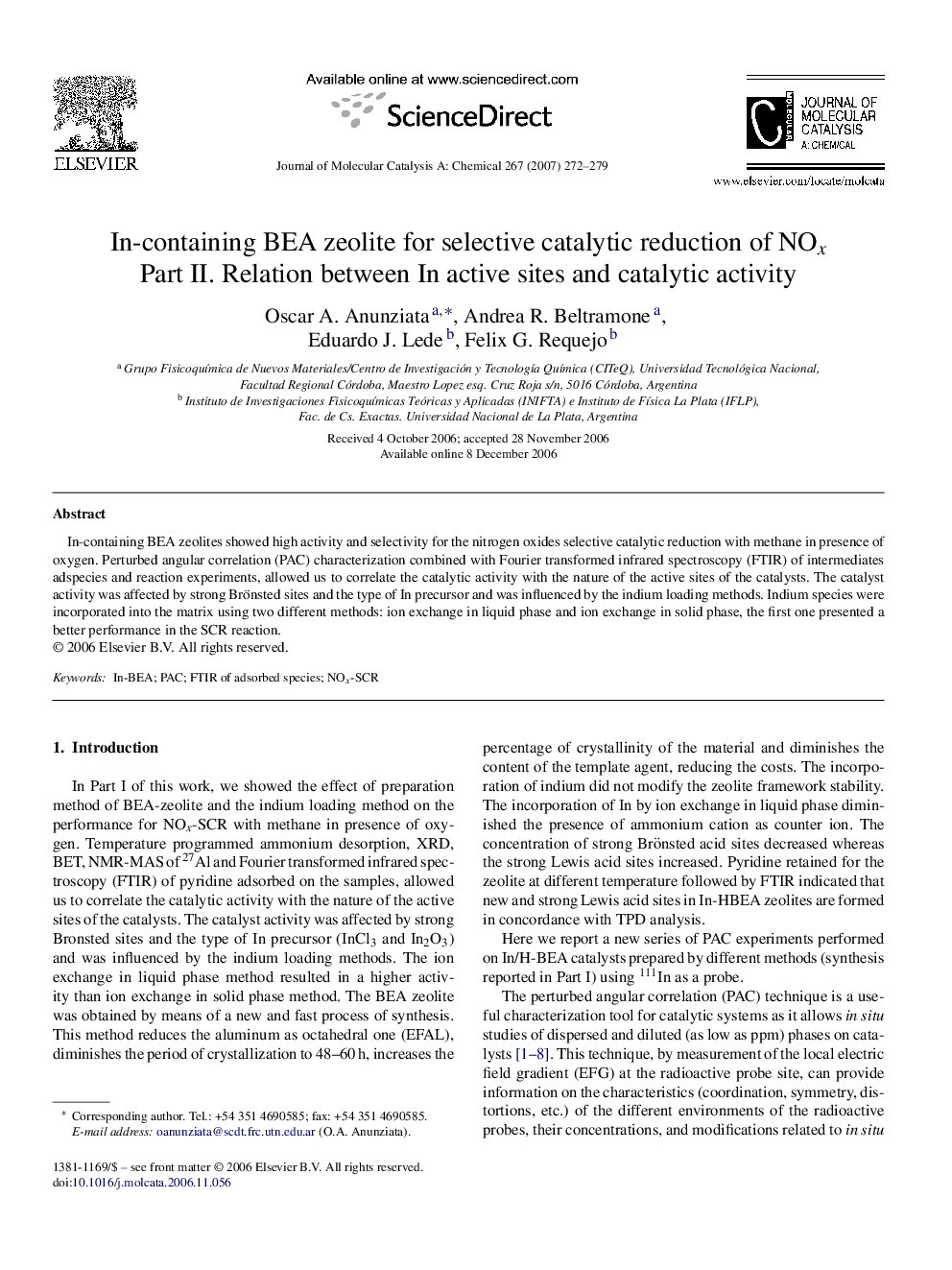| Article ID | Journal | Published Year | Pages | File Type |
|---|---|---|---|---|
| 68807 | Journal of Molecular Catalysis A: Chemical | 2007 | 8 Pages |
In-containing BEA zeolites showed high activity and selectivity for the nitrogen oxides selective catalytic reduction with methane in presence of oxygen. Perturbed angular correlation (PAC) characterization combined with Fourier transformed infrared spectroscopy (FTIR) of intermediates adspecies and reaction experiments, allowed us to correlate the catalytic activity with the nature of the active sites of the catalysts. The catalyst activity was affected by strong Brönsted sites and the type of In precursor and was influenced by the indium loading methods. Indium species were incorporated into the matrix using two different methods: ion exchange in liquid phase and ion exchange in solid phase, the first one presented a better performance in the SCR reaction.
Graphical abstractFor In-HBEA prepared by ion exchange in solid phase (Sample C) with higher Bronsted content, methane conversion increases, but the NO conversion is constant or decreases. Methane is not consumed to reduce NO. In-HBEA prepared by ion exchange in liquid phase using InCl3 (Sample A) possess more NO2− adspecies and less Brönsted sites and these sites are capable to convert methane selectively to reduce NO to N2. The In species in Sample A is InO+ by PAC characterization. Figure optionsDownload full-size imageDownload as PowerPoint slide
